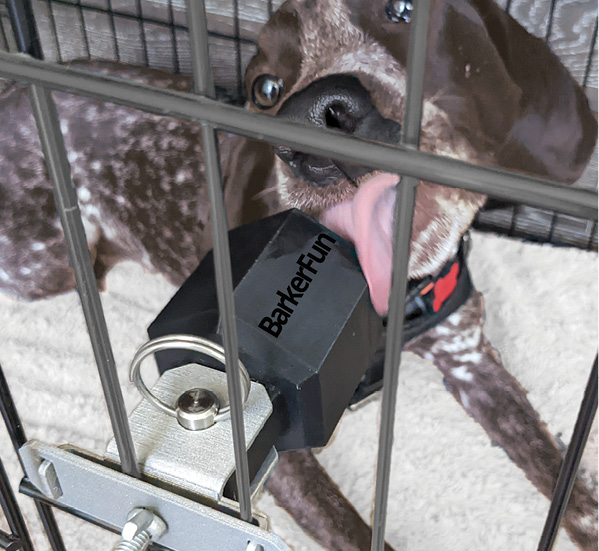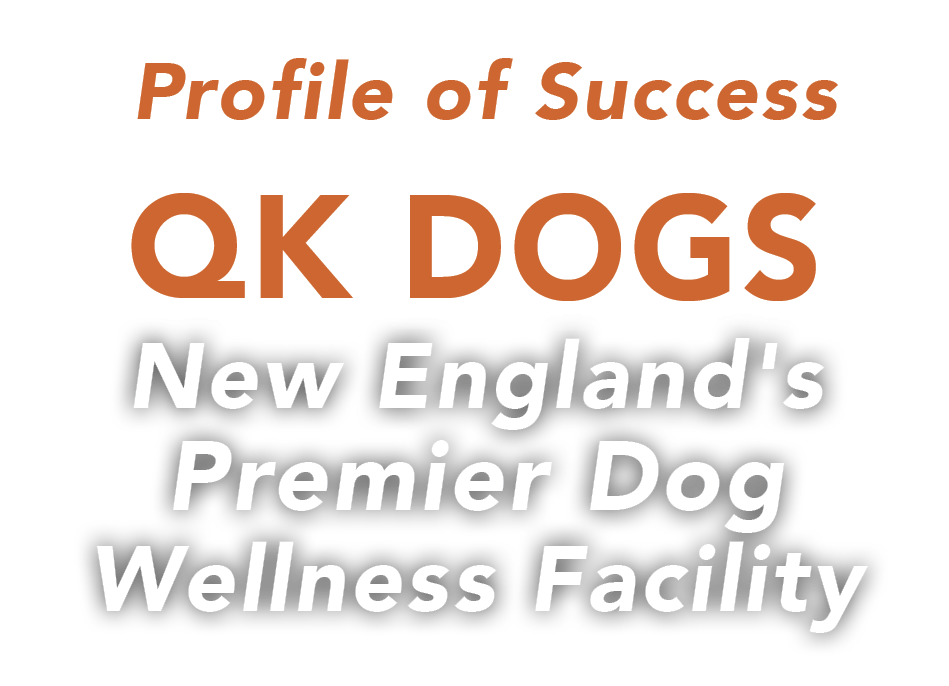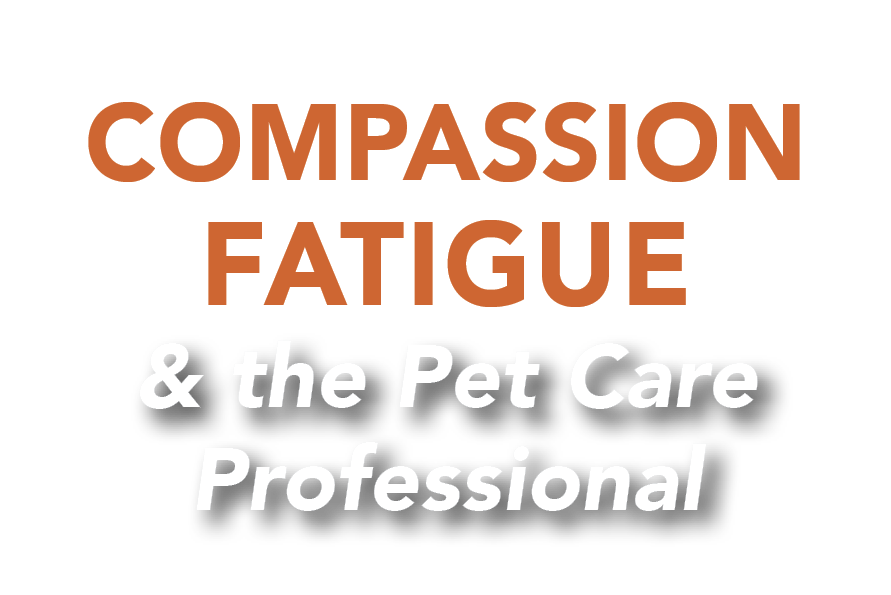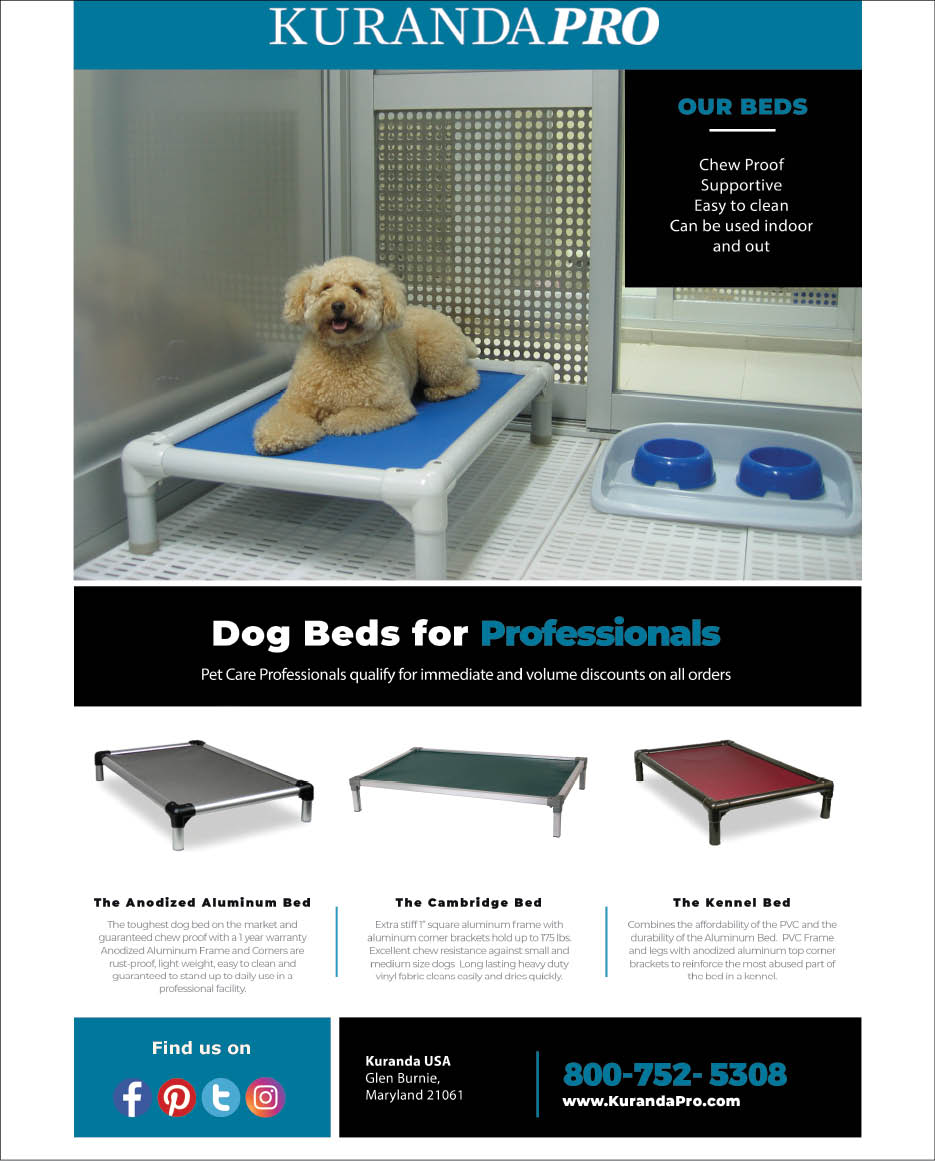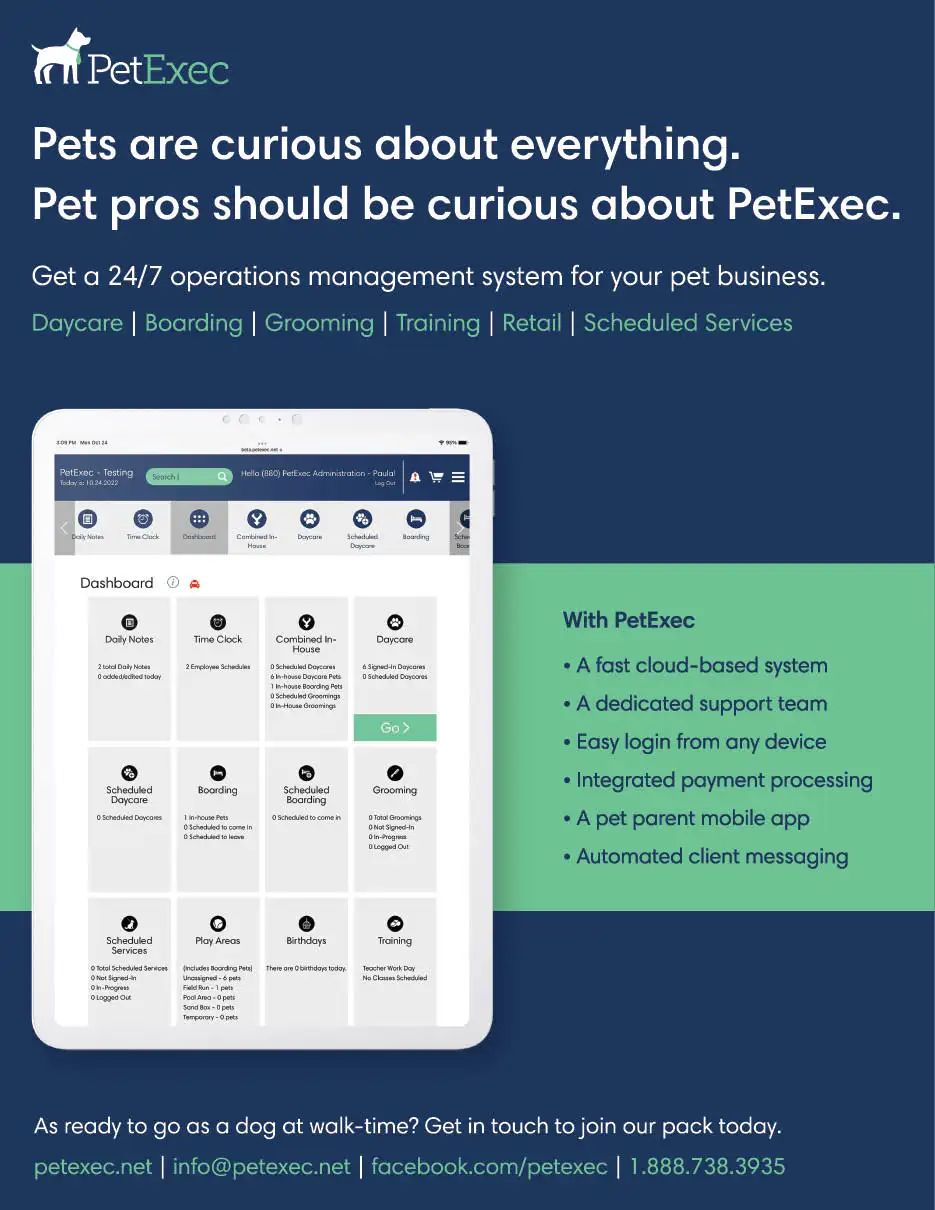Barkleigh Productions, Inc.
Rebecca Shipman
Laura Pennington
Brandi Aurelio
Luke Dumberth
Todd Shelly
Gwen Shelly
Adam Lohr
James Severs
Karin Grottola
Cassidy Ryman
Evan Gummo
CONTACT
General: (717) 691-3388
Editorial: rebecca@barkleigh.com
Advertising: james@barkleigh.com



 hen you say “dog training” to people, sometimes it’s like saying, “I’m gonna go workout at the gym”—something they don’t necessarily enjoy or want to do. If you’re an athlete training for a race, or if you start a new job and are in training, you’re probably going to put in a bunch of effort upfront and then you drop down and maintain it over the course of the years. Similarly, we need to help people change their mindset on dog training so that they realize if they put in maximum effort upfront, it should lead to major rewards down the line.
hen you say “dog training” to people, sometimes it’s like saying, “I’m gonna go workout at the gym”—something they don’t necessarily enjoy or want to do. If you’re an athlete training for a race, or if you start a new job and are in training, you’re probably going to put in a bunch of effort upfront and then you drop down and maintain it over the course of the years. Similarly, we need to help people change their mindset on dog training so that they realize if they put in maximum effort upfront, it should lead to major rewards down the line.
Unfortunately, many people are still stuck in that old school concept that training is going to be boring and mundane. There are tons of trainers out there that have created fun, exciting programs using games and enjoyable experiences to build the bond between the dog and their human. And that’s what it comes down to—all training starts with the bond.


 n late August of last year, Federal Reserve Chairman Jerome Powell said reducing skyrocketing inflation will “bring some pain” to businesses and households, but not acting would be even more painful.
n late August of last year, Federal Reserve Chairman Jerome Powell said reducing skyrocketing inflation will “bring some pain” to businesses and households, but not acting would be even more painful.
And so it began…
Expenses have soared. Interest rates and labor and building costs have climbed rapidly, and will likely continue to increase. If this sounds relatable, it’s more important than ever not to get complacent—and not expect 2023 to be as strong as this year.
With a recession on the horizon, business owners are approaching a critical fork in the road. The most common path is jagged with pitfalls leading to lower revenue, higher stress, lower profit and drastically reduced business value. Yet, it’s the path of least resistance—and by far the most traveled. In case it’s not obvious, I don’t recommend taking this route.

 irst of all, let’s dive into exactly what the “WOW Factor” is. The Cambridge Dictionary defines it as: “…a quality or feature of something that makes people feel great excitement or admiration…”
irst of all, let’s dive into exactly what the “WOW Factor” is. The Cambridge Dictionary defines it as: “…a quality or feature of something that makes people feel great excitement or admiration…”
“Wow” is an exclamation of astonishment, and to “astonish” is to surprise greatly. So, by adding the WOW Factor, we are really talking about making your clients “feel” something. We want them to feel excitement. We want them to admire, approve, appreciate and even adore what you do for them. And to create excitement, anticipation and astonishment, you need to surprise every prospect and client who comes into your world.
So, how do you surprise your clients?
A “surprise” is defined as an unexpected event (could be good or bad, but obviously we’re talking about the good kind), and “to surprise” is to cause feeling of wonder and amazement.


 othing is more alarming than when you walk into your feline boarding area and see blood in an enclosure, even if it is a very small amount. More times than not, the blood is from an aggressive cat that has injured itself during a struggle or a spat with one of their siblings. However, blood can also be from an internal medical issue.
othing is more alarming than when you walk into your feline boarding area and see blood in an enclosure, even if it is a very small amount. More times than not, the blood is from an aggressive cat that has injured itself during a struggle or a spat with one of their siblings. However, blood can also be from an internal medical issue.
When you find blood, the first step is to always identify where the blood is coming from. If the cat is actively bleeding, isolate it and apply pressure to stop the bleeding. Next, the owner should be notified. Then follow your facility’s policies on when to seek veterinary care.
Many times during the veterinarian pre-boarding appointment, the doctor mentions that the cat needs a dental, and the family elects to wait for a later time to schedule. When a cat with bad teeth bites their carrier or the boarding enclosure, several things could happen that result in visible blood. Blood from the mouth is usually either from gums that were so irritated they began to bleed or a tooth has fallen out. While blood from the mouth area is alarming, it usually tends to be a dental issue. The owners should still be notified immediately.

 oIP, unlike landline phones, transforms business communications through numerous innovative features and benefits that are already built in. This article is intended to help professionals in the pet care industry understand VoIP and to help determine if switching to a VoIP system is the right choice for you.
oIP, unlike landline phones, transforms business communications through numerous innovative features and benefits that are already built in. This article is intended to help professionals in the pet care industry understand VoIP and to help determine if switching to a VoIP system is the right choice for you.Technology is the difference between traditional landline phones and VoIP systems. Landline phones require intensive infrastructure of exchange hardware and wiring, allowing one to make and receive calls only.
VoIP technology has changed how companies communicate. While IP capabilities have been around several decades, VoIP has advanced in recent years, thanks to innovation and faster internet speeds.
VoIP phones work by turning your voice into data, which is then transmitted over the internet, like sending emails. VoIP calls are made on your phone, connected to the internet with a network cable or adapter, or via a computer’s microphone and speakers using an app. When making calls, the VoIP service provider routes the voice data between you and the other caller, all within a split second. If you’ve used Skype, you’ve used VoIP.
- Remote Working. Employees shouldn’t use their personal phone numbers for business. VoIP, unlike landlines, allows employees to work anywhere using their business phone number through mobile and desktop apps, and voice messages forwarded as email attachments.



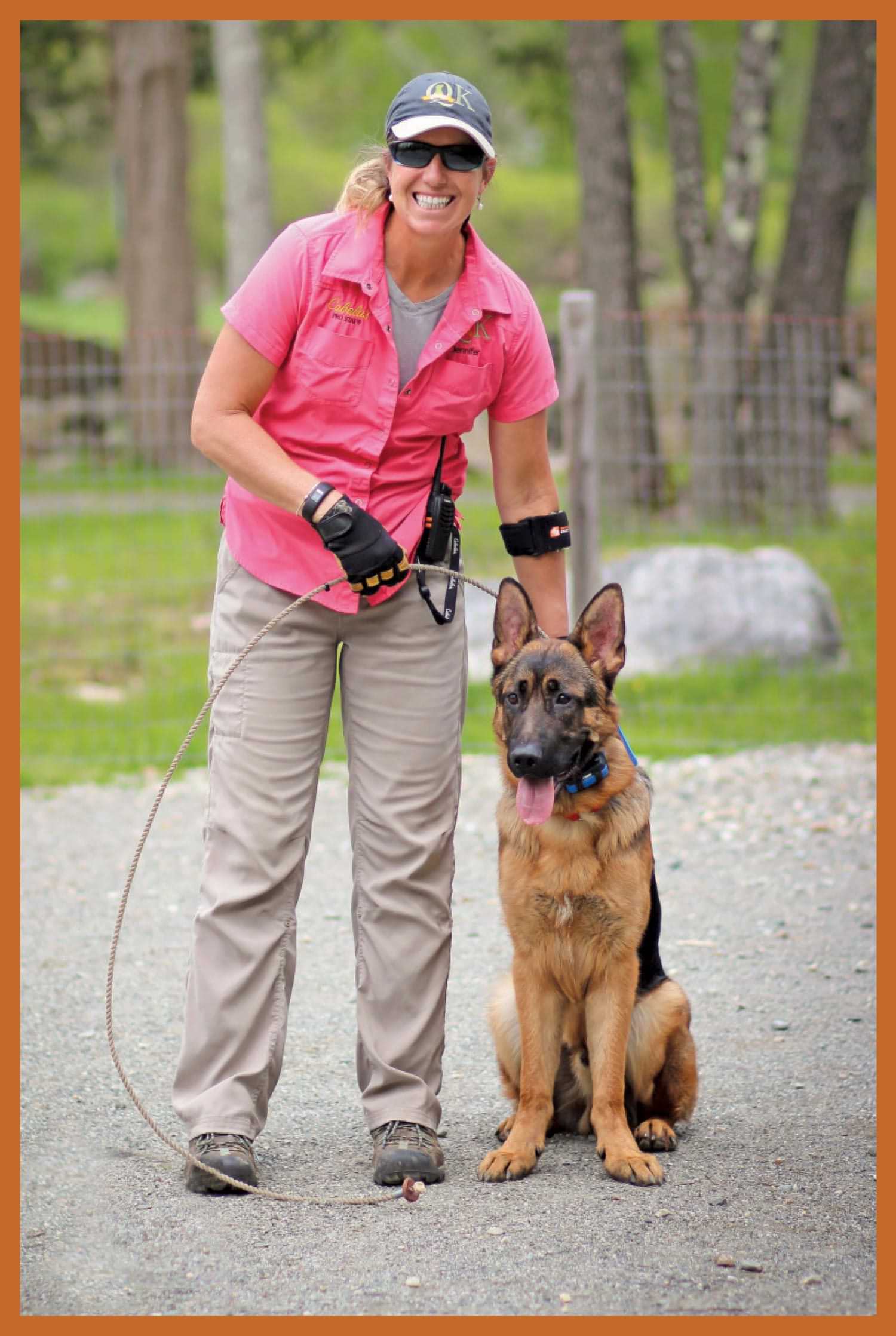



Photos provided by QK Dogs

 well-trained dog that is healthy and physically fit is a walking billboard for success,” says Jennifer Broome, founder, owner and lead trainer of QK Dogs.
well-trained dog that is healthy and physically fit is a walking billboard for success,” says Jennifer Broome, founder, owner and lead trainer of QK Dogs.
Jennifer is a true outdoorswomen who grew up with sporting dogs. As a child she began her own pet sitting and dog walking business. In college she got her degree in Wildlife Biology and Management and subsequently worked for both state and federal agencies as a Biologist.
During her career as a Biologist, Jennifer developed her own dog training program. Today Jennifer Broome is the owner of the largest dog training, boarding and wellness facility in the Northeast, specializing in raising and training field dogs for hunting as well as field companions.



 t’s time to talk about one of the most overlooked and underrated revenue streams in your business…your existing customers.
t’s time to talk about one of the most overlooked and underrated revenue streams in your business…your existing customers.
You may be thinking, “What? Why are we marketing to them? They’re already customers; we already got them. Why would we need to market them?”
It takes way more effort and costs way more money (about five times more) to attract a new customer than to keep an existing one. That equates to a lot of money when you take into account your whole customer base. You want to make sure that you’re taking good care of your customers and making it easy to buy from you, over and over again.
I find that many businesses work hard to bring in new customers, and once they’ve finally made that first purchase, they just say, “Great, mission accomplished, we got a new customer. We can move on now.”



Photos by Dr. Laura McLain & Ready Pet Education
 o you and your staff know what to do in the case of an animal cardiac emergency in your facility? Training on pet first aid and CPR can go a long way in giving the pets in your care the best chance at a good outcome, as well as build your staff’s confidence to act instead of panic.
o you and your staff know what to do in the case of an animal cardiac emergency in your facility? Training on pet first aid and CPR can go a long way in giving the pets in your care the best chance at a good outcome, as well as build your staff’s confidence to act instead of panic.
While fortunately rare, cardiac arrest is one of the scariest events to happen in a pet business—up there with bloat, serious fights and disease outbreak. This article will discuss pet cardiac emergencies as well as how to recognize and provide care to an animal experiencing this type of medical emergency.



 he boarding facility’s daily arrivals are in the lobby, some of which the team has affectionate names for based on their behaviors. Nervous Nellie will spend the entire visit pacing. Bulldozer Buddy is an excessive digger. Hide-Away Henry will squeeze underneath anything to avoid being seen or touched, often refusing to come out even to eat. The entire team worries about these pets as they put forth a happy-to-see-you-again attitude, but the team is getting tired of feeling concerned and stressed. The reality is, they are feeling compassion fatigue.
he boarding facility’s daily arrivals are in the lobby, some of which the team has affectionate names for based on their behaviors. Nervous Nellie will spend the entire visit pacing. Bulldozer Buddy is an excessive digger. Hide-Away Henry will squeeze underneath anything to avoid being seen or touched, often refusing to come out even to eat. The entire team worries about these pets as they put forth a happy-to-see-you-again attitude, but the team is getting tired of feeling concerned and stressed. The reality is, they are feeling compassion fatigue.
Pet care professionals in boarding/daycare facilities are used to dealing with aggressive, nervous or destructive behavior from the pets “vacationing” at the facility. However, the constant exposure to pets under stress takes its toll on all team members, causing compassion fatigue. Compassion fatigue is an emotional side effect of working with pets in distress and suffering. Those three pets coming in on this particular day are suffering from fear, anxiety and stress, and the team is vulnerable to the pressure.
Compassion fatigue is characterized by physical and emotional exhaustion from wanting to care for or help pets in need. Some may call it the high cost of caring, or burnout. No matter what label you give it, those working in boarding/daycare facilities get worn down dealing with pets suffering from the stress of being away from home. The result can be employees quitting their jobs, or worse. The time is now for implementing a plan to improve pets’ experiences at boarding/daycare facilities and reduce the compassion fatigue experienced by the team.

